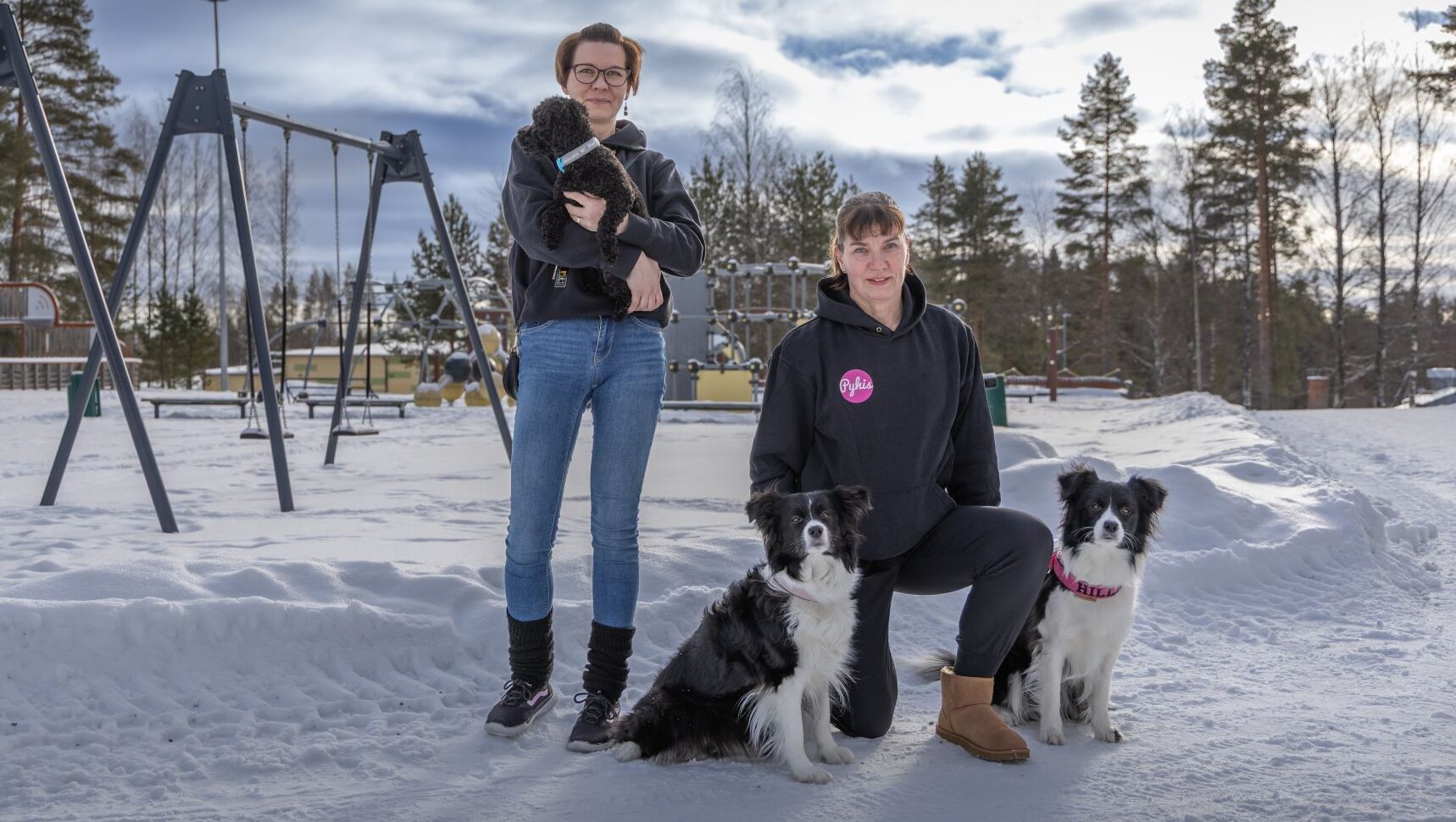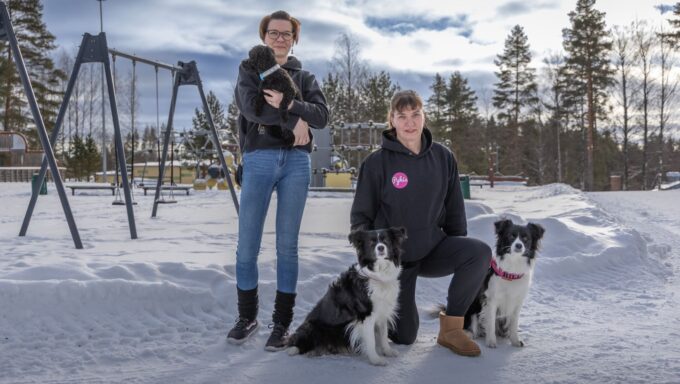There is a cheerful atmosphere at Pyhäselkä School when school dogs Aava and Hilla gather students around them during the break between classes. The dogs’ happy faces show how much they enjoy being scratched. When the break ends, Aava and Hilla join the students for their next lesson.
At the same time, Piki appears from the teachers’ room, where he has spent the break with the teachers. Piki trots down the hallway toward the classroom, where familiar faces are already waiting for him. These three tail-waggers have become regulars at Pyhäselkä School.
The role of dogs in schools is evolving
The school dog program is a pilot project by the City of Joensuu, in which teachers from the region can participate. Over 20 dogs are involved in the program, regardless of age, size, or breed. Pyhäselkä School is represented by Heli Lemmetty, a physical education teacher, and her border collies Aava and Hilla, as well as Päivi Leskinen, a teaching assistant, and her miniature poodle Piki.
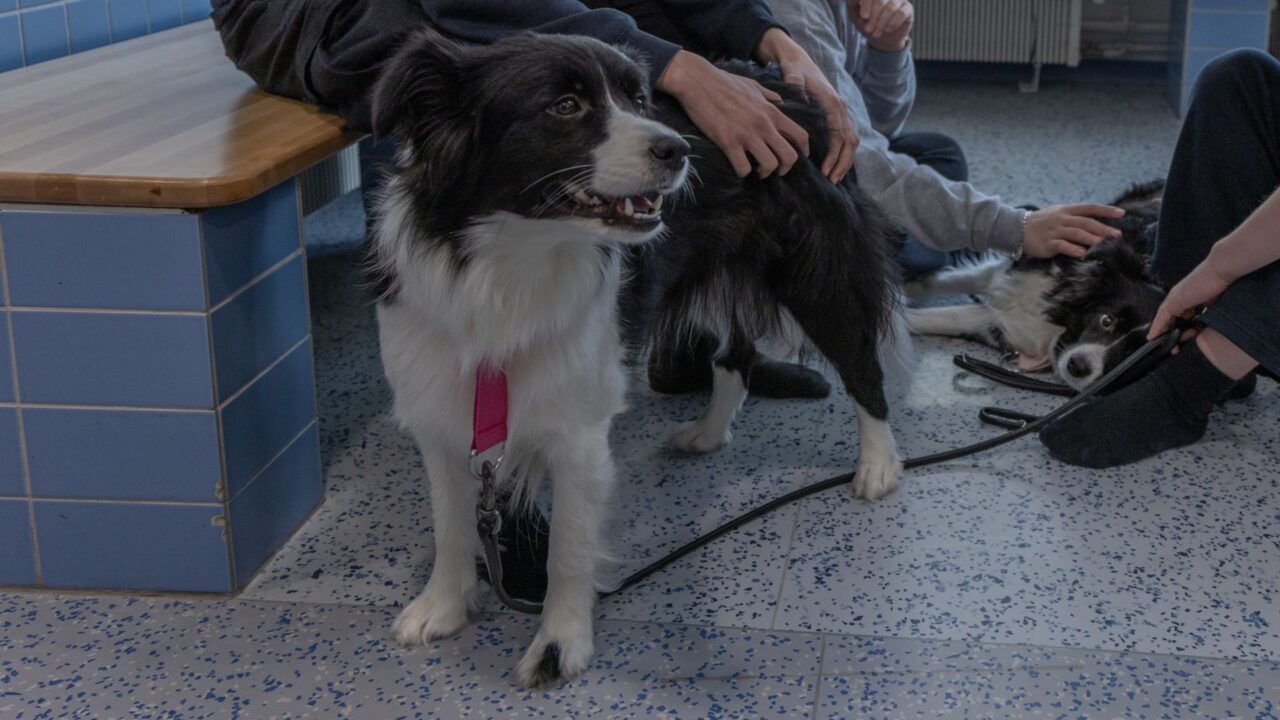
Instructor Irene Turunen explains that dogs have a calming effect in the school environment, but their role is not limited to just being present and creating an atmosphere.
– In the school dog project, we aim for the dogs to also have a pedagogical role – they would support active learning and be active participants, Turunen says. She has expertise in linking dog training to the needs of the school environment through her work as a dog entrepreneur and support dog trainer, and as a Finnish language teacher at Nepenmäki School.
The dogs are taught various tasks that promote active learning. They can spin a wheel of fortune, divide students into groups, or pick up objects for learning activities. Lemmetty explains that the only limit to the dogs’ roles as part of the lessons is imagination.
We aim for the dogs to also have a pedagogical role – they would support active learning and be active participants
The program began in the summer of 2024 by testing the dogs’ reactions and stress tolerance to different situations, such as the presence of children and various noises. At the same time, the cooperation between the handler and the dog is also ensured. The training lasts the entire school year, allowing each dog to develop at its own pace and grow into part of the school dog program.
– It is important that the dog program is organized in all schools so that it is safe and goal-oriented, says Turunen. During training, teachers establish rules to ensure the safety of the school dog activities and focus on the well-being of the dogs.
Turunen notes that the most important skill for school dogs is the ability to calm down in the school environment. Piki already knows this well, and according to Leskinen, the dog enjoys taking naps during lessons – sometimes even in students’ laps or on the desk.

Aava and Hilla enjoy being around students, even in a busy environment. At break time, students gather around the dogs, giving them scratches, and it is clear that dogs love it. Lemmetty smiles and says that her dogs think humans are the best thing that can exist.
A busy and noisy environment can be stressful for school dogs, so training prepares them for such situations in advance. During training, they practice calming down in the classroom environment, both with students and during training days with the handlers, Turunen explains.
Dogs enrich lessons and learning
At the end of the break, the school dogs head toward the classrooms. Piki is greeted by familiar students at the classroom door, where he joins the class on Thursdays and Fridays. Aava and Hilla, on the other hand, join the 9th graders for their Swedish lesson.
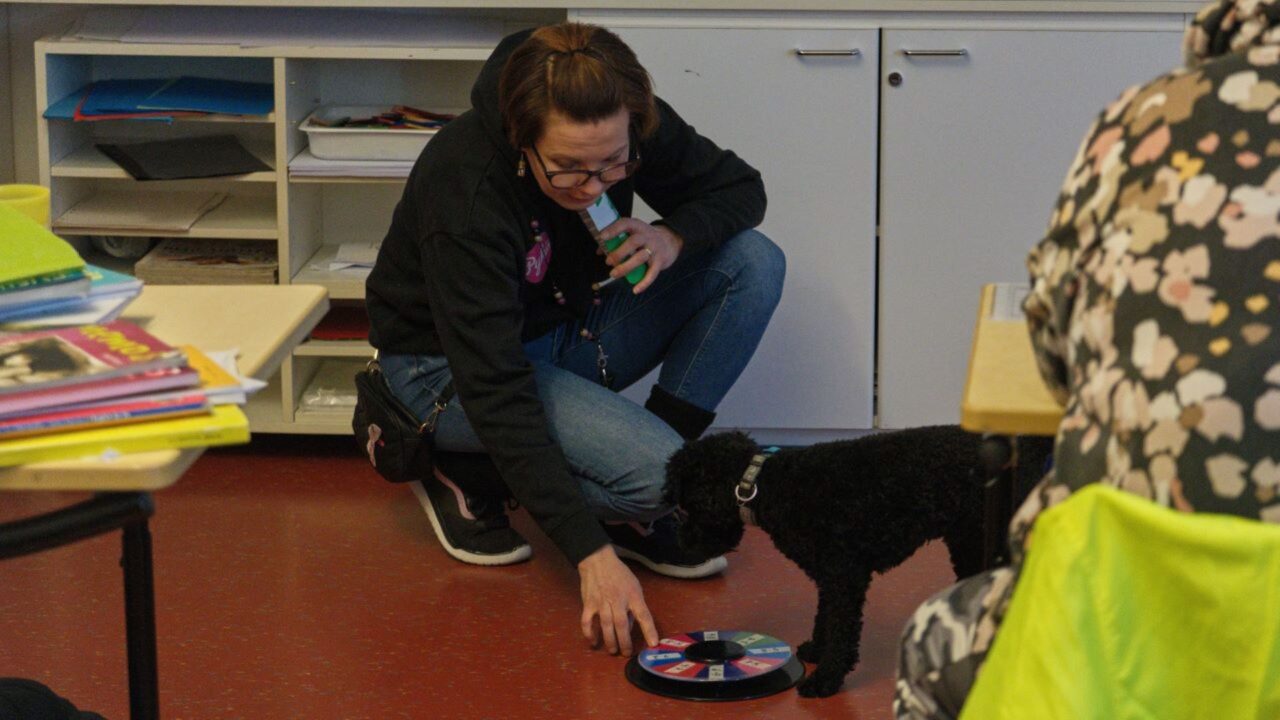
At the beginning of the lesson, Piki spins the wheel of fortune with his paw to choose a multiplication table for Leskinen to ask the students. Choosing multiplication tables clearly seems to be one of Piki’s favorite tasks. As the class moves to the small group area, Piki first observes his surroundings before requesting to be held by Leskinen.
The dogs bring a nice change to the lessons – for example, choosing tasks with the dog makes learning more fun and engaging. Leskinen shares that students are more eager to stay for support lessons when the dog is involved.
Aava and Hilla primarily participate in outdoor physical education lessons, where they enjoy orienteering and hiking, according to Lemmetty. They can also visit other lessons, such as the Swedish class. Once the students finish their Swedish tasks, Aava and Hilla spin the wheel of fortune. The options are extra tasks, physical activities, or treats.
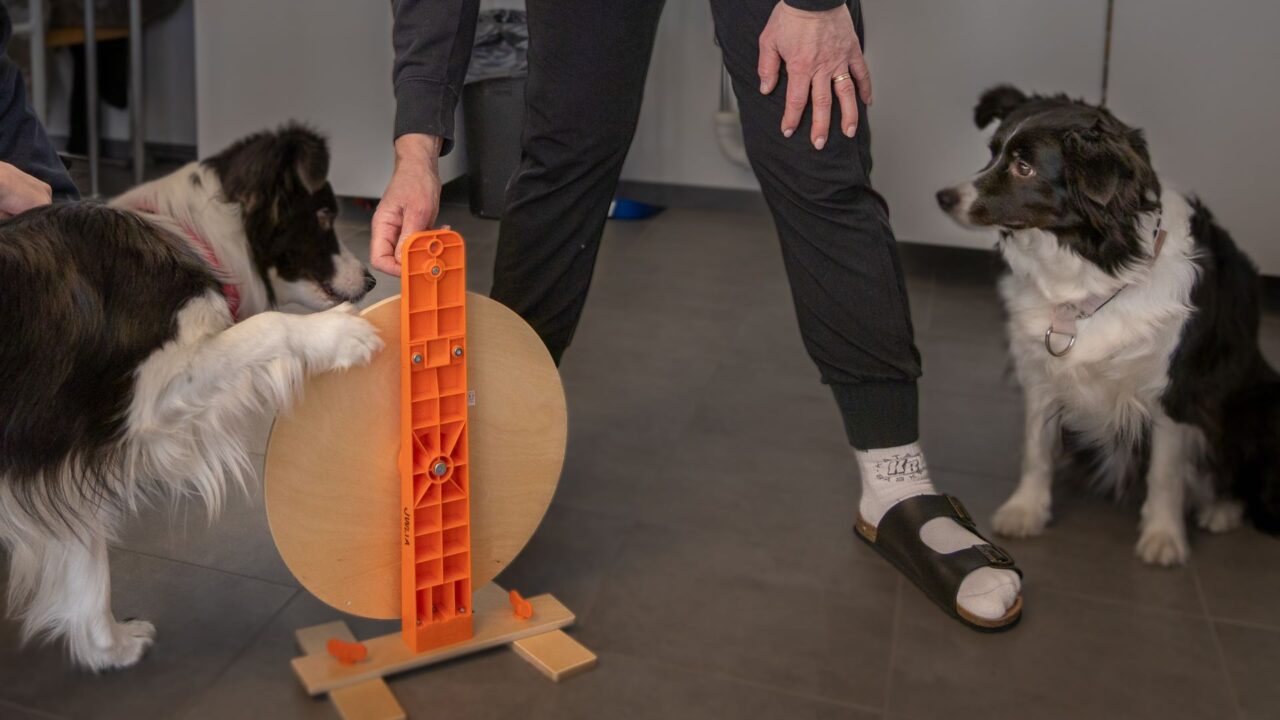
Lemmetty shares that the presence of the dogs increases persistence in working, as students want to involve the dogs. Additionally, the extra tasks assigned by the dogs are always well received – who could say no to a dog?
The school dog program has brought significant positive impact to students’ daily lives. Turunen states that the dogs’ presence improves concentration in lessons and boosts motivation. The dogs reduce anxiety and make school days more meaningful, because petting them during lessons and breaks helps students relax.
A safe and respectful environment
The presence of dogs is carefully managed to ensure that both students and staff feel comfortable. There are no allergic individuals at Pyhäselkä School, which allows the dogs to be more involved in teaching. It is also considered that dogs may cause anxiety or fear in some people.
It has been practiced different situations with the dogs, such as meeting people who have no experience with dogs or those who are afraid of them
Turunen mentions that at the beginning of training, various situations have been practiced, such as meeting people who have no experience with dogs or those who are afraid of them. The school dog program focuses on creating a safe and respectful environment, where activities can bring joy and benefits to everyone, without disregarding anyone’s feelings.
School dogs do not participate in lessons where there are individuals who are afraid of dogs. In the school hallways, they always move on short leashes to ensure that no one will unexpectedly encounter a dog. Even during breaks, the dogs are on leashes, allowing students to choose whether they want to approach them.
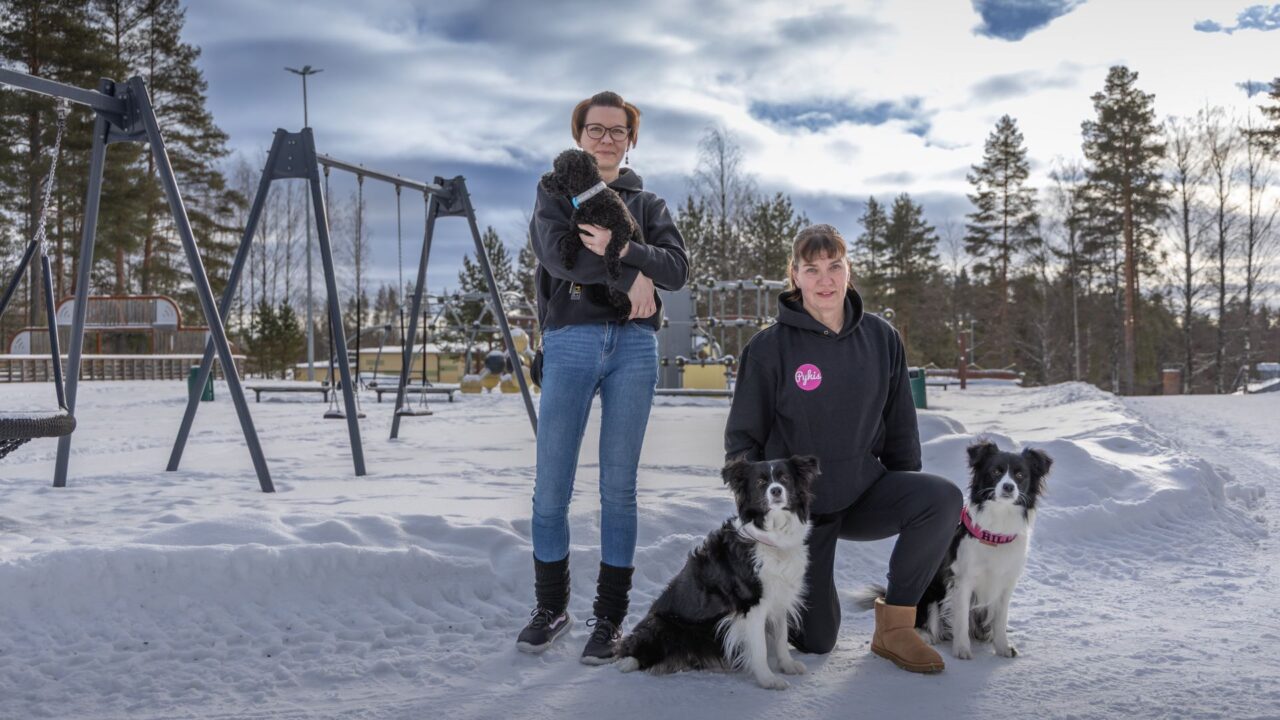
Lemmetty and Leskinen look forward to May when Piki, Aava, and Hilla will reach an important milestone as trained school dogs. Additionally, Leskinen sums up the significance of the school dog program at the Pyhäselkä School:
– Shared joy is double the joy – or triple the joy, as is the case in this school, she says, referring to the three furry friends.
Artificial intelligence has been used in the translation of the article.

